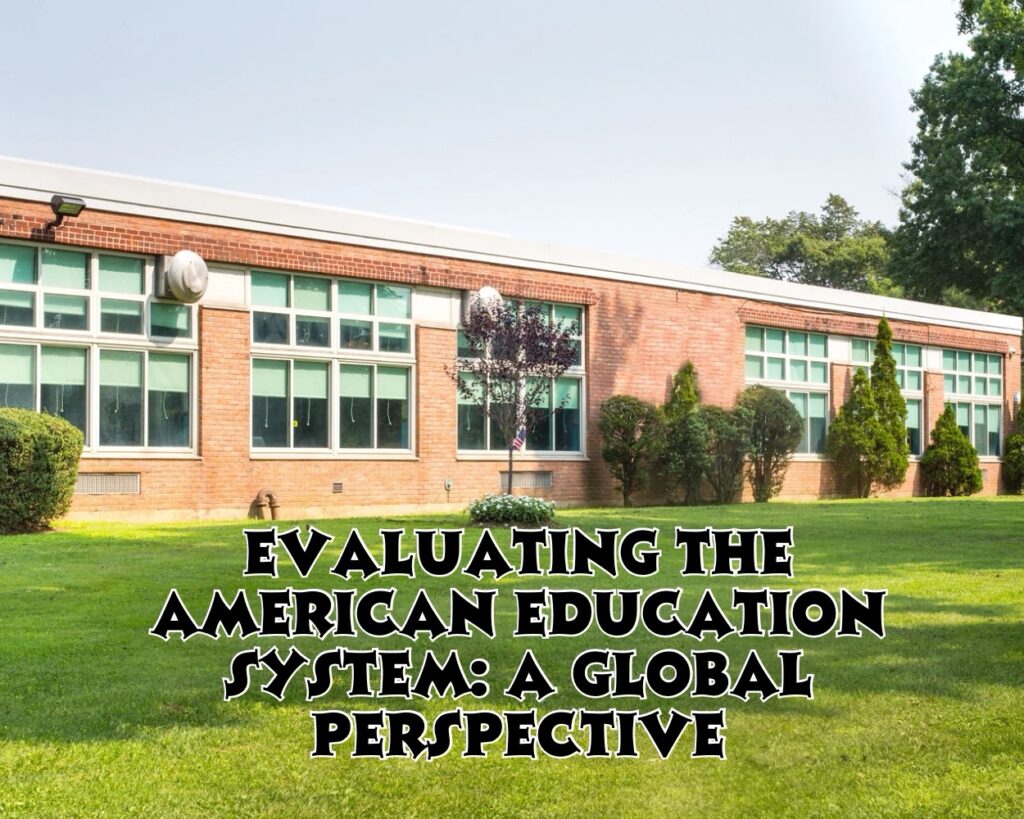How Does the American Education System Rank Internationally?
The American education system, known for its flexibility and diversity, faces challenges in global rankings. While the U.S. excels in higher education, with universities like Harvard and MIT recognized worldwide, its primary and secondary education systems often lag behind other developed countries in areas like math, science, and reading proficiency. International assessments like PISA (Programme for International Student Assessment) frequently place American students below their counterparts in countries like Japan, South Korea, and Finland.
What Strengths Does the American Education System Have?
One of the key strengths of the American education system is its emphasis on creativity, critical thinking, and extracurricular activities. American schools encourage students to develop a broad range of skills beyond academic knowledge, including leadership, teamwork, and innovation. This holistic approach helps nurture well-rounded individuals prepared for diverse challenges.

What Are the Main Challenges Facing American Education?
The American education system faces several challenges, including disparities in funding and resources, varying standards across states, and a significant achievement gap between students from different socioeconomic backgrounds. Additionally, there is a growing concern about the preparedness of students for the rapidly changing job market and the evolving demands of the 21st century.
How Can Technology Be Leveraged to Improve Education in the U.S.?
Technology offers immense potential to revolutionize American education. Implementing digital learning tools, online resources, and interactive educational software can enhance student engagement and learning outcomes. Additionally, technology can help bridge the gap in educational resources between different schools and districts, ensuring more equitable access to quality education.
What Role Can Teacher Training and Development Play?
Investing in teacher training and professional development is crucial for improving education quality. By equipping teachers with the latest pedagogical techniques, knowledge, and technology, the education system can ensure that educators are well-prepared to meet the diverse needs of their students and adapt to new educational challenges.
How Can Curriculum Reforms Make a Difference?
Curriculum reforms that focus on real-world skills, critical thinking, and problem-solving can better prepare American students for global competitiveness. Integrating subjects like coding, financial literacy, and environmental science can help students develop the skills needed in today’s interconnected world.
What Impact Can Parental and Community Involvement Have?
Increased parental and community involvement can significantly enhance the educational experience. Engaging parents and community members in school activities, decision-making processes, and student learning can create a more supportive and enriching environment for students.
The American education system, while facing challenges, has the potential to lead globally with the right reforms and investments. Emphasizing teacher development, technology integration, curriculum reforms, and community involvement can help the U.S. education system not only catch up with but also set new standards in global education.
Addressing Key Questions in American Education
How Can We Address the Achievement Gap in American Schools?
The achievement gap, a significant issue in the American education system, refers to the disparity in academic performance between groups of students, especially those from different socioeconomic backgrounds. Addressing this requires a multifaceted approach, including increasing funding for under-resourced schools, implementing targeted educational programs, and providing additional support for students who are struggling.
What Is the Role of Standardized Testing in American Education?
Standardized testing is a contentious topic in the U.S. education system. Proponents argue that it provides a uniform measure of student achievement and accountability for schools. Critics, however, contend that excessive focus on standardized testing can narrow the curriculum and put undue pressure on students and teachers. Balancing the use of standardized tests with other forms of assessment could provide a more comprehensive view of student learning.
How Can We Better Prepare Students for the Workforce?
To better prepare students for the workforce, the American education system can integrate more vocational and technical training programs in high schools. These programs, coupled with internships and apprenticeships, can provide practical skills and real-world experience, making students more job-ready upon graduation.
What’s the Importance of Early Childhood Education in the U.S.?
Early childhood education is crucial for laying the foundation for lifelong learning and success. High-quality preschool programs can help close the achievement gap by providing children, especially those from low-income families, with early learning experiences that foster cognitive, social, and emotional development.
How Can We Foster More Equity in Education?
Fostering equity in education involves ensuring that all students, regardless of their background, have access to quality educational resources, experienced teachers, and a supportive learning environment. This may involve redistributing resources, implementing inclusive educational policies, and addressing systemic biases and inequalities.
What Can Be Done to Support Teachers More Effectively?
Supporting teachers can involve better compensation, opportunities for professional development, and creating a collaborative work environment. Recognizing and valuing teachers’ hard work and dedication can also contribute to higher job satisfaction and better student outcomes.
How Can We Encourage Parental Involvement in Education?
Encouraging parental involvement can be achieved by creating more opportunities for parents to engage with schools, such as parent-teacher meetings, volunteering opportunities, and workshops. Schools can also reach out to parents through regular communication and by creating a welcoming and inclusive school community.
The American education system, with its challenges and opportunities, is at a crossroads. By addressing these critical questions and implementing effective strategies, there is potential for significant improvement, leading to a more equitable and high-quality education for all students.
As an Amazon Associate we earn from qualifying purchases through some links in our articles.



